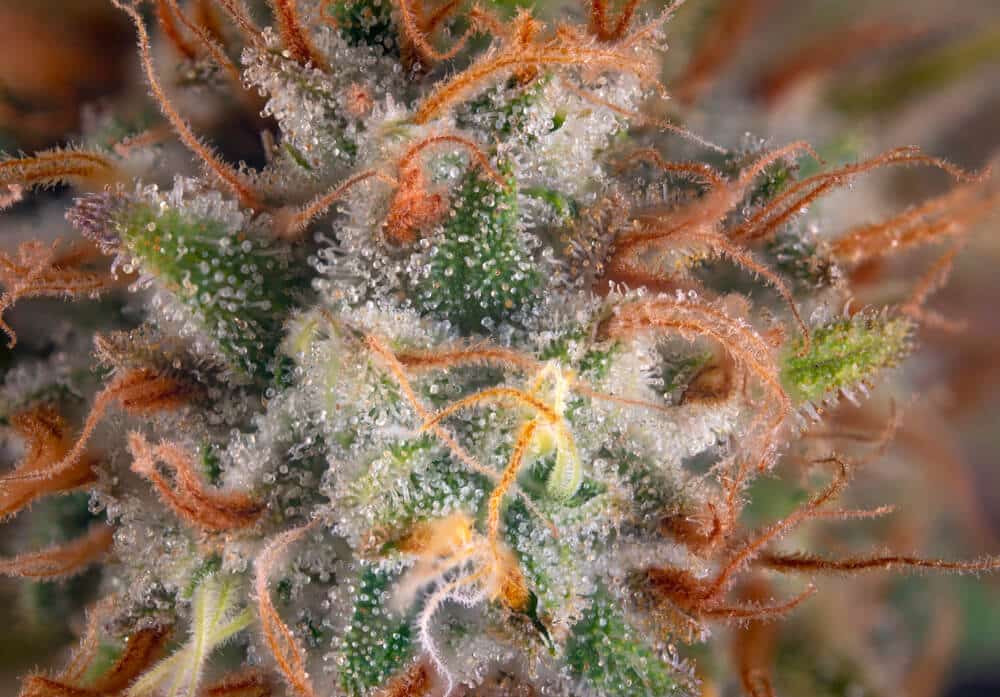It’s no secret that the world of cannabis comes with a language all its own. Words like “indica” and “sativa” are incredibly important to know because they can make a big difference in your cannabis experience. And if you’re here right now, it’s probably because you’ve run into another – less well-known but equally essential – cannabis-related word: terpenes.
Exactly what are terpenes and how do they play a role in your cannabis experience? As it turns out, terpenes might be one of the most important things to consider the next time you visit your favorite dispensary.
We’ve created a guide that breaks down all the basics of cannabis terpenes, giving you everything you need to understand how and why terpenes matter so much.
What are Terpenes?
Terpenes are chemical compounds that naturally occur in cannabis, a wide variety of plants, and even a handful of animals. Terpenes are responsible for various plants’ aromas, flavors, and, sometimes, their colors.
There are more than 30,000 different terpenes (and terpenoids, which are terpenes that contain additional functional groups in their chemical makeups). The purpose of terpenes is generally to either attract pollinators or protect the host plant from disease and herbivores (plant eaters). Research even suggests that terpenes might be a way for plants to communicate with each other!
Terpenes serve a wide range of purposes in the human world, such as:
- To make fragrances and flavors
- To produce solvents
- To protect agricultural crops
The primary purpose of terpenes is to support the plants and animals in which they naturally occur. However, terpenes are also making a major impact as an ingredient in a number of medications and natural health products, such as tea tree oil.
But perhaps the most fascinating use of terpenes is how terpenes in cannabis may help shape the effects of cannabinoids like THC and CBD.
The Top Three Terpenes Found in Cannabis
Cannabis terpenes number well above 100, but there are three that are easily the most dominant.
Myrcene
Most cannabis strains fall into one of two categories: either they are dominant in myrcene, or they contain a high amount of caryophyllene (another terpene).
Myrcene is a terpene also found in large amounts in lemongrass and hops, providing an herbaceous, earthy, musky, and sometimes spicy aroma. It’s also responsible for the mildly sweet flavor of cannabis (myrcene is also present in mangoes).
It is possible that myrcene could eventually be a natural option for relieving inflammation and the symptoms of certain diseases, such as osteoarthritis. In 2015, a study found that myrcene may be able to reduce inflammation, specifically the type experienced by individuals with osteoarthritis.
Caryophyllene
Also called beta-caryophyllene, this terpene is what gives some cannabis strains their signature peppery, spicy flavor. Caryophyllene is also present in plants such as black pepper, rosemary, cloves, and oregano. So, if you notice that a specific strain has any of these scents, it’s probably because it contains caryophyllene.
Caryophyllene is sometimes categorized as an “atypical cannabinoid” because it can interact with the endocannabinoid system’s CB2 receptor. Researchers believe that caryophyllene may be able to improve symptoms associated with anxiety and depression, colitis, diabetes, and even Alzheimer-like diseases. It might also potentially help treat inflammatory conditions because of its ability to bind to the CB2 receptor.
Limonene
You might guess from its name, but limonene is the terpene well-known for its citrusy, fresh, and invigorating aroma. It’s commonly found in citrus fruits, including lemons and ginger. In cannabis, limonene is found in high concentrations in fruity, fresh strains such as Black Cherry Soda or Papaya Punch.
One scientific study found that limonene may be able to support improved immunity, specifically in a way that could protect against certain disorders. The study’s researchers noted that the limonene helped boost the production of antibody-producing cells, specifically in the bone marrow and spleen. These cells play a vital role in identifying bacteria and viruses, as well as neutralizing them.
Where Do Terpenes Come From?
Terpenes occur naturally, primarily in plants. Some of the most common sources of plant terpenes include:
- Cannabis
- Tea
- Citrus fruits
- Thyme
- Spanish sage
In cannabis, terpenes can be found in the trichomes of female plants. The trichomes, which are the sticky glands that are visible on the surface of cannabis buds, contain the resin glands that are responsible for producing terpenes.
Many different factors can affect the amount and type of terpenes in a specific cannabis plant. For example, a plant grown indoors might have differing terpene content when compared to one grown outdoors. Temperature, light exposure, growing mediums, nutrients, and even harvest methods can influence various terpenes’ levels.
Because terpenes are volatile compounds, they can easily be lost during the extraction process. For quite some time, the standard extraction processes used for cannabis resulted in the loss of a broad range of terpenes. But now that cannabis experts are learning more about the value of terpenes, new extraction methods and products (like live resin) are helping preserve as much terpene content as possible.
Cannabis Terpenes: Effects
There is still a lot to learn about how terpenes in cannabis can affect consumers and what the benefits of terpenes may be. We can look to aromatherapy, which taps into the power of terpenes to provide various benefits, for an idea of how cannabis terpenes might be useful.
Researchers have focused on studying cannabinoids (THC and CBD) for quite some time. But now, scientists are learning more about the possibility that terpenes may contribute to the “synergy” of cannabis. This theory is known as the “entourage effect.” It suggests that the full spectrum of cannabis compounds – including cannabinoids and terpenes – might work better together than alone.
A 2018 scientific review found that when patients with epilepsy took a full-spectrum CBD extract (which included both cannabinoids and terpenes), their symptoms improved more than those who used a CBD isolate (only containing cannabinoids, no terpenes). The same review noted that the full-spectrum extract was four times as potent as the isolated product. Therefore, they needed a significantly lower dosage to achieve positive results. The researchers connected this increased potency to the “synergistic” relationship between cannabinoids, terpenes, and other compounds.
In addition, it is terpenes you can thank for the familiar and powerful aroma of your favorite cannabis strains. For many cannabis consumers, the smell (and flavor!) of their go-to strains is a huge part of the overall experience.
Explore Cannabis Terpenes at Giving Tree Dispensary
If you’re interested in discovering the potential benefits of terpenes in cannabis, the first place to start is with high-quality cannabis products. At Giving Tree Dispensary in Phoenix, you can choose from a diverse range of premium cannabis strains and full-spectrum products, each of which offers a unique terpene profile for you to enjoy.
Get more information about cannabis terpenes and their potential for your cannabis goals when you visit our Phoenix dispensary today!
Image by Roxana Gonzalez/ shutterstock.com


